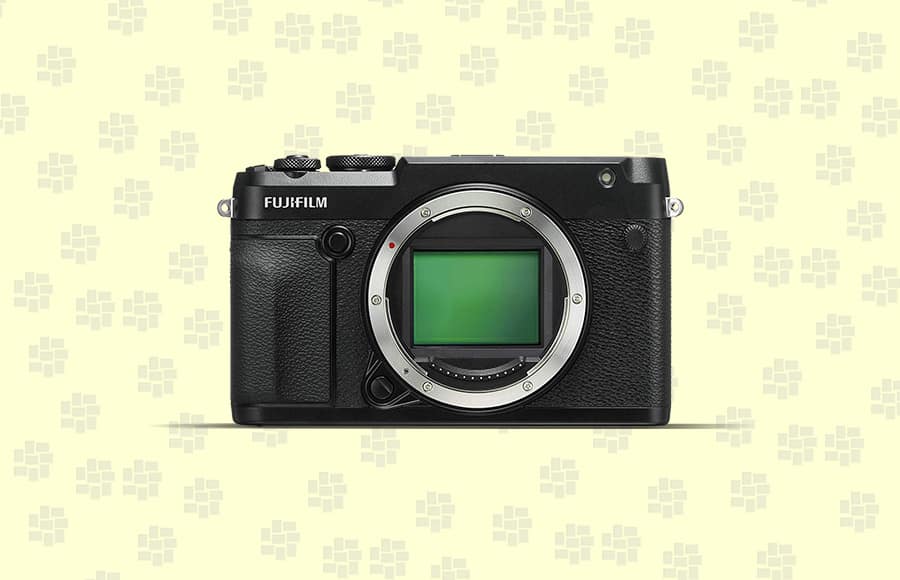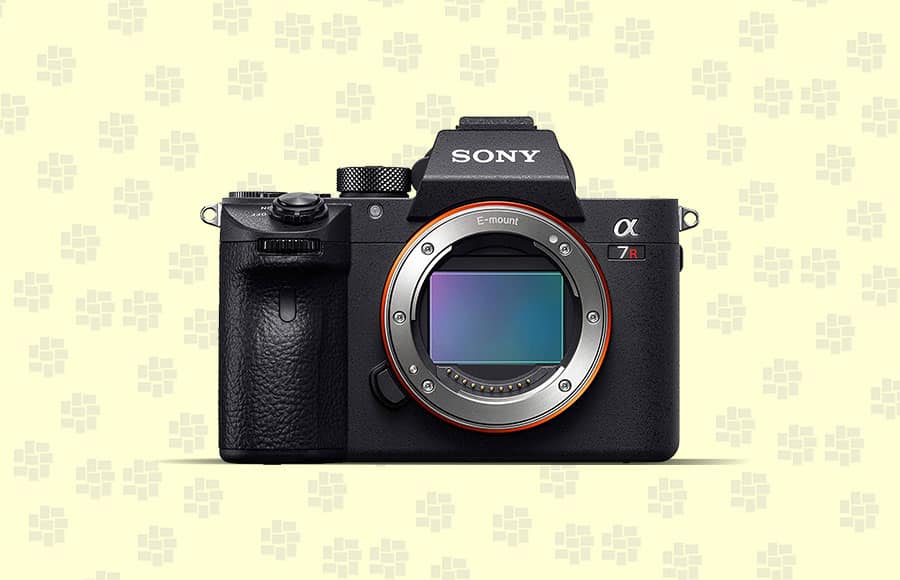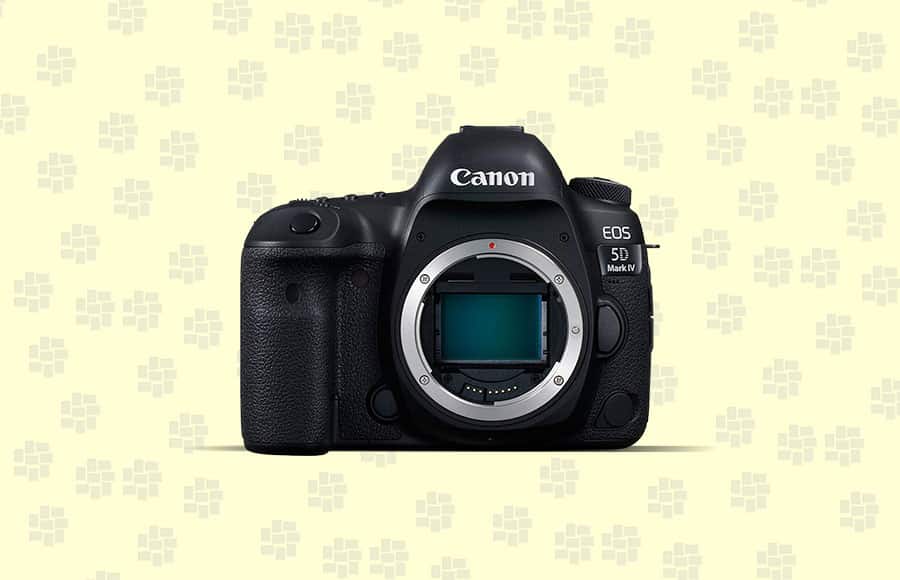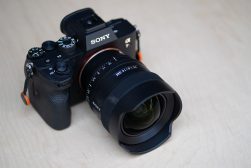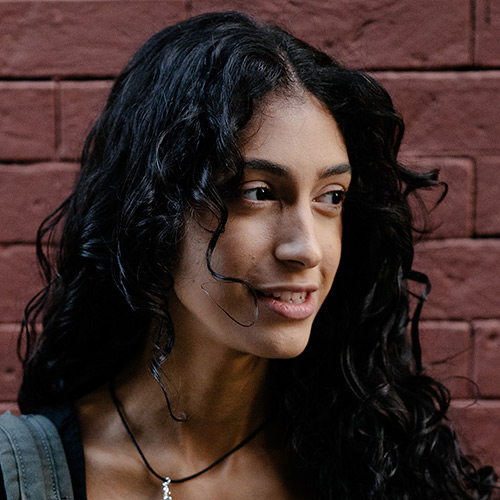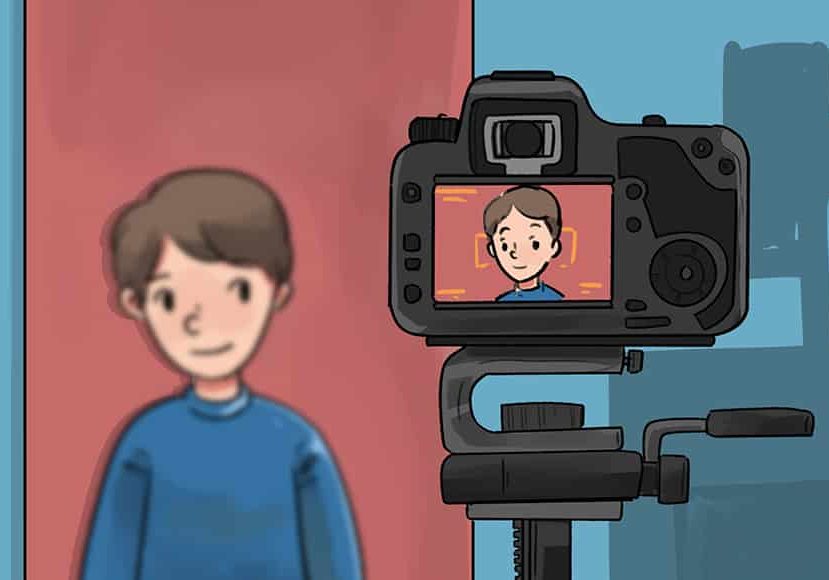
Best Camera for Portrait Photography
Want to shoot incredible portraits? This guide is for you. Read our recommendations of this year's best cameras for portrait photography!
Shotkit may earn a commission on affiliate links. Learn more.
Whether you’re a professional or an amateur photographer, it’s likely you’ve researched the best camera for portraits.
After all, we all want the best quality images of our subjects…
Most modern cameras here in 2024 are more than capable of producing a great photo. Even smartphones with their fancy background blurring features can deliver impressive results.
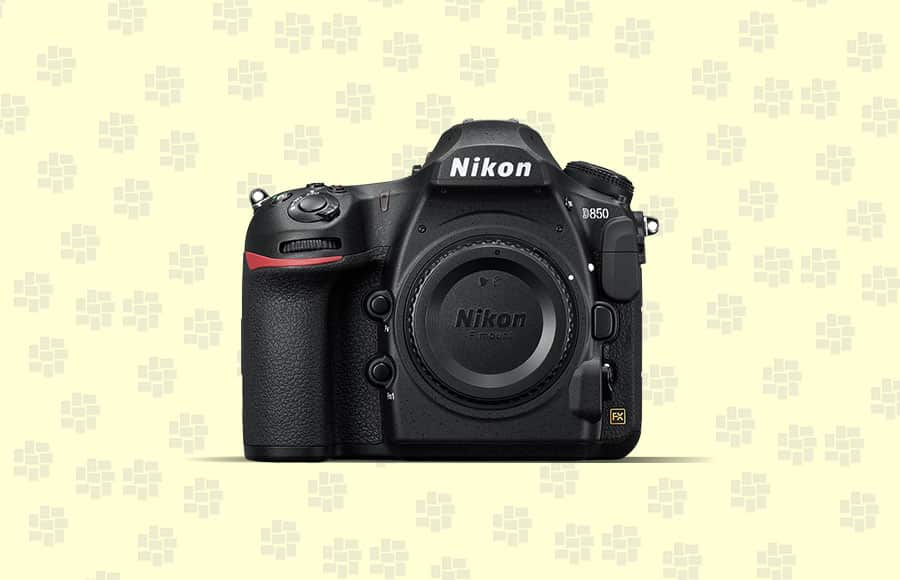
Fantastic image quality and performance packed into a durable, ergonomic body. Portrait photographers won't be disappointed.
However, if you really want to invest in producing the best possible images of your clients, loved ones, or whatever subject you choose to shoot, these are the cameras that should be on your wishlist.
Once you’ve got the camera, we recommend investing in one of these lenses for portrait photography too – after all, a camera is only as good as the glass on the end of it!
Let’s take a closer look at the recommendations.
Best Cameras for Portrait Photography in 2024
| Image | Product | Features | |
|---|---|---|---|
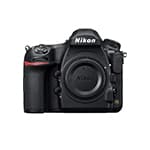 | Nikon D850BEST ALLROUND |
| View Price → |
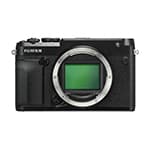 | Fujifilm GFX 50RHIGHLY RECOMMENDED |
| View Price → |
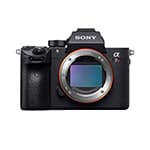 | Sony a7R IV |
| View Price → |
 | Canon 5D Mark IV |
| View Price → |
1. Nikon D850
Sensor: Full-frame | Resolution: 45.7MP | Viewfinder Coverage: 100% | Monitor: 3.2-inch tilt-angle touchscreen, 2359K dots | Autofocus: 153 points | Max frame rate: 7fps (9fps with battery grip) | Video: 4K UHD at 30p | Weight: 915g (32.3 lb)
- 45.7MP resolution
- Incredible image quality & sharpness
- Low noise
- Fast and accurate AF
- Outstanding battery performance
- Built in WiFi can be sluggish
- Only one card slot takes SD
This is arguably one of the best DSLRs for portraits.
The two main factors that make for an excellent camera for portraits are quality and resolution – and the Nikon D850 more than excels on both counts.
Featuring Nikon’s first back-side illuminated full-frame CMOS sensor, it packs a full 47.5 megapixels of image resolution rendering fine images that can be as big as a billboard or as small as the screen on your phone.
Like the D810 before it, the Nikon D850 has the lowest native ISO of any DSLR or mirrorless camera —ISO 64 (expandable down to ISO 32). That might not seem like much, but it can actually make a noticeable difference in dynamic range, almost equalling that of some medium format cameras. (The full native ISO range is 64-12800.)
High-megapixel cameras often add in quite a bit of noise, but the Nikon D850 has very low noise even at higher ISOs. At the same time, the density of the pixels makes it so there’s next to no moiré.
The D850‘s autofocus system is delightfully fast and accurate, even in near-dark situations, and the 153-pt autofocus system is a breeze to use with the new AF joystick.
Add the 9 fps and the optional battery grip and the Nikon D850 becomes fast enough to double as a high-end sports camera.
While the Nikon D850’s live view is hard to beat, both in terms of AF and face recognition, the tilting touchscreen works much like an iPhone, is much brighter than on previous Nikons, and the refresh rate is in real time with no lag at all. Overall, it’s a real pleasure to use if you’re not a viewfinder lover.
Another feature that shines on the Nikon D850 is its fast processing speed, especially considering its high megapixel count. The Expeed5 processor has next to no lag and manages to add in lower noise and subtle tonal and textural details.
It also works surprisingly well in continuous shooting mode (9 fps with the MB-D18 battery pack and EN-EL 18b/a Lithium-ion Battery or 7 fps without) and allows for full-frame 4K UHD movie recording.
Other features, such as outstanding battery performance (up to 1840 shots per charge!), focus shift, focus peaking, impressive video options (including slow-motion and time lapse), and full weather sealing make this a particularly well-rounded professional camera.
It even has a silent shooting mode – although it can’t rival the silence of mirrorless cameras, it’s a handy feature for discreet situations, such as with wedding, boudoir or glamour photography.
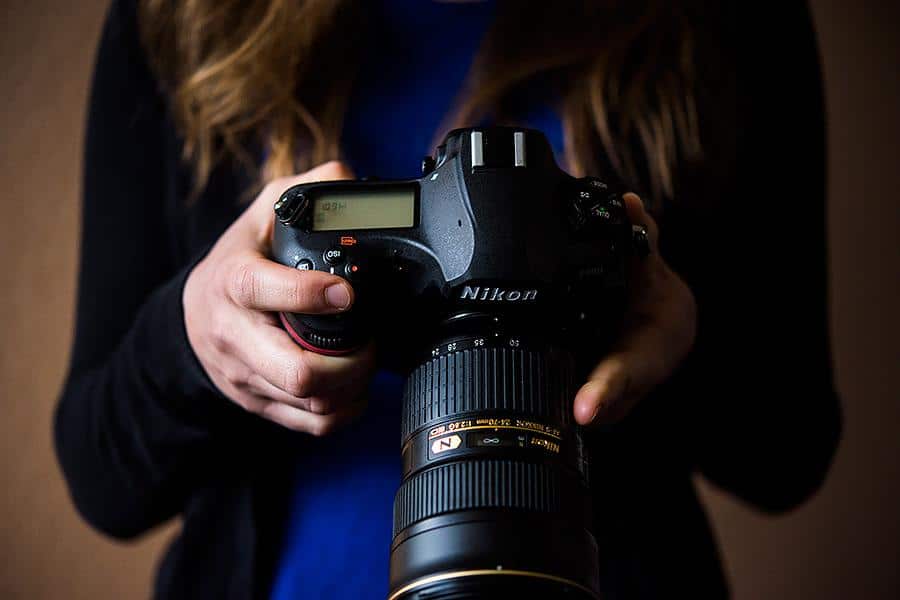
With the D850 you have a wide selection of lenses to choose from | © Jesse La Plante
Since the Nikon D850 uses the Nikon F mount, you have an incredible selection of exceptional lenses to choose from, both from Nikkor and from third-party lens makers. Just make sure to get a portrait lens that matches the quality of the D850 – lenses are more than half of what makes an exceptional portrait.
Still, what stands out at the end of the day with portrait shooters is the Nikon D850’s incredible image quality and sharpness – see our review for more image samples.
In fact, when comparing the Nikon D850’s print quality to a medium format camera you can tell the difference, but only just. It’s a hard camera to beat for serious amateurs and professionals looking for a portrait camera that can do it all.
Having all that dynamic range and resolution to play with also comes in handy when converting images to black and white, and achieving a beautifully broad and smooth tonal range.
At just under $3000 body-only, it’s not cheap – but none of the best portrait photography cameras are. And considering the fact that the Nikon D850 is one of the most highly recommended professional portrait photography cameras on the market today, it’s definitely a worthy investment. If you are looking for the best professional camera for portraits, look no further.
2. Fujifilm GFX 50R
Sensor: 43.8mm x 32.9mm CMOS sensor (Medium Format) | Resolution: 51.4MP | Viewfinder: 3.69 million dots | Monitor: 3.2-inch tilt-angle touchscreen, 2.36 million dots | Max frame rate: 3fps | Video: Full HD at 30p | Weight: 775g (27.3 oz)
- Rugged and weather sealed
- Portable and light
- Excellent sharpness & image quality
- High quality LCD and EVF
- No image stabilization
- Performance can be slow
If you really love the look that a medium-format camera can give you, but have never been able to afford one, the mirrorless Fujifilm GFX 50R combines the advantages of traditional medium-format sensors (like image quality) with the rock-solid reliability of 35mm full-frame systems.
Considerably smaller than a traditional medium-format camera, the Fujifilm GFX 50R is far more portable and affordable than a Phase One or Hasseblad.
In fact, if we had to say only one thing about this particular Fujifilm model it’d be that it combines the medium-format feel of a film camera with the portability and convenience of a DSLR camera – all meshed into one (much more) affordable package.
It goes without saying that the 51.4-megapixel sensor provides incredible resolution. The exceptional level of detail is especially noticeable in print. The details are more realistic than standard full-frame cameras, the graduation and light fall-off smoother, and the color naturally vivid in a way that’s difficult to find elsewhere.
The images are simply beautiful, but remember that more detail may mean you’ll be spending more time retouching images – learning how to smooth skin in Photoshop, or even how to remove blemishes in Photoshop, may be necessary when all the intricate skin detail is revealed in the image.
Another benefit of having a larger sensor is a much higher physical dynamic range and more exceptional low light performance than standard full-frame sensors. Drop a RAW file into Lightroom or Capture One and you can really pull out the detail in these babies.
The GFX 50R‘s ISO performance in the higher ranges is superior to any full-frame or APS-C camera. For normal images sizes, you won’t really see any change in image quality from ISO 50 all the way through to ISO 25,600!
At normal image sizes, image quality is unchanged from ISO 50 (L) up to ISO 25,600 (H)!
At ISO 51,200 the only degradation at normal image sizes is slightly less color saturation and a little mottling.
ISO 102,400 is a little mottled, and still perfectly usable at these reasonable sizes.
One thing to note about using medium-format cameras for portrait photography is that they have an incredibly shallow depth of field. This is amazing for most portrait photography but can make focusing a bit challenging. It’s very different from using a standard 35mm sensor or really any other kind of camera.
The autofocus of the Fujifilm GFX 50R (review) is better than that of traditional digital back medium-format cameras, but it’s nothing spectacular compared to full-frame cameras. But one doesn’t really buy a medium-format camera to be “snappy.”
On the practical side, the overall ergonomics of the GFX 50R are quite nice; the grip feels really good in the hand and the buttons are all in easy-to-use positions. In general, it’s much faster and more intuitive to use physical buttons and knobs than getting into the menus on an LCD, and the Fujifilm GFX 50R doesn’t disappoint.
Speaking of LCDs, both the LCD screen and the electronic viewfinder on the 50R are high quality, and the hardware overall is seriously top-of-the-line. The battery performance, especially for a mirrorless camera, is also excellent.
The Fujifilm GFX 50R comes with a G mount, which makes Fujinon’s excellent GF line of lenses available to it. (Remember, it’s important to have a high-quality lens to match the quality of the camera – especially if you’re looking for exceptional bokeh.) The 50R doesn’t come with image stabilization, so be sure to invest in lenses that have it.
Regarding lenses, if portability is a factor for you, I’d recommend investing in prime lenses rather than zooms. While perhaps the most compact camera in the medium format world, the Fujifilm GFX 50R still weighs more than a large DSLR camera.
If you’ve never used a medium format camera before, I’d recommend trying it out first. They operate quite a bit differently and the differences may not be for you. It’s sort of like using a sailboat instead of a motorboat – you have to really love the art of it.
Is the Fujifilm GFX 50R the best camera for portraits? If you’re looking for the beautiful aesthetic quality that’s unique to medium-format cameras, have the patience it takes to get the shots (remember it’s a sailboat, not a motorboat), and have the money to spend, then quite possibly.
If you need fast autofocus or just like to be fast about things in general, then this probably isn’t the portrait camera for you. If you’re open to seeing the world in a different way, take it out for a spin. You might just fall in love with it.
3. Sony Alpha a7R IV
Sensor: Full-frame Exmor R CMOS | Resolution: 61MP | Viewfinder: 5.7K dots | Monitor: 3-inch tilt-angle touchscreen, 2.14K dots | Autofocus: 567 Phase detection + 425 Contrast points | Max frame rate: 10fps | Video: 4K at 30p | Weight: 657g (1.45 lb)
- State-of-the-art autofocus
- Incredible 61MP resolution
- Lightweight
- Superb dynamic range
- Excellent low light performance
- Large file sizes
- Complex menu system
If you want a camera for portraits and many other things besides, the Sony Alpha a7R IV is a fantastic option. It’s the lightest of all the portrait cameras on this list, has an incredibly high resolution, takes absolutely fantastic photos, and does just about everything well. If all of these are what you are looking for, the Sony Alpha a7R IV best mirrorless camera for portrait photography for you.
Like all recent Sony mirrorless cameras, the a7R IV comes with a state-of-the-art autofocus system that’s truly hard to beat, especially when compared to DSLR cameras.
The 567 phase-detection points combined with the 425 contrast points really blows everything else on this list (and most lists) out of the water. So if your portrait photography has a lot of motion in it, this may very well be the best camera to get.
Like to shoot in continuous shooting mode? The a7R IV has autofocus tracking that can track just about anything, be it the eye or face of a person or an animal, or really any other object as well. (Good news for those who do pet portraits!)
The AF accuracy will drop a little when shooting in 8 or 10fps bursts, but it’s only really noticeable if you have fast-moving subjects like children racing around.
As far as image quality is concerned, it’s definitely on par with the Nikon D850. The 61-megapixel full-frame sensor yields a fantastic level of detail with a superb dynamic range – perfect for pulling out the shadow and highlight detail when editing portrait photography in Lightroom or your editor of choice.
In the world of ISO the Sony a7R IV doesn’t disappoint. It’s native ISO range is 100 through 32000, expandable 50 to 102400.
Like all Sony a7 cameras, the low-light shooting abilities of the Sony a7R IV are fantastic. Even with the increased resolution, the a7R IV keeps noise well under control.
Ergonomically, the Sony a7R IV is much improved over previous models and is now quite comfortable to work with. It’s also the most compact camera on this list and is perhaps the most portable high-resolution camera on the market. It’s certainly more enjoyable to carry around than a DSLR camera.
Other features include a respectable high-res viewfinder, excellent battery life (for a mirrorless camera), and a tilting touchscreen.
There’s also a pixel-shift mode, which while not ideal for most portrait photography (your subject would need to remain absolutely still), is a fantastic option for other applications and can boost your image’s resolution to a whopping 240 MP.
If you want a camera that will double as a video camera, the a7R IV’s 4K video has stunning detail, especially when compared to its high-resolution mirrorless peers. You can opt for footage that’s full sensor width or go for even more details with either a 1.6 or a 1.8x crop.
All output is 8-bit, which isn’t as good as it could be, but certainly isn’t a deal-breaker, especially if your primary purpose is shooting portraits.
Since Sony’s been in the full-frame mirrorless camera game longer than anyone else, they have a wide range of native lenses available. Zooms or prime, top-of-the-line G-master or something a bit less expensive, Sony has you covered in terms of high-quality portrait lenses. There’s even a decent array of Sony flashes to choose from.
Overall, the Sony a7R IV is one of the most capable pro cameras out there. It’s a comfortable and responsive camera, does just about everything well (and most things fantastically), and it turns out amazing images no matter what you use it for.
Is the Sony a7R IV the best camera for portraits for you? If you value portability, frequently use continuous shooting, need the ultra-high-resolution, and/or want an all-around camera that excels at just about everything, then yes!
If the price seems a little steep for you (just under $3500 camera body only), the previous generation Sony a7R III is now under $2500 and has more megapixels than the Canon 5D Mark IV that retails for near the same price.
4. Canon 5D Mark IV
Sensor: Full-frame CMOS | Resolution: 31.7MP | Viewfinder Coverage: 100% | Monitor: 3,2-inch, 1.62 million dots | Autofocus: 61-points | Max frame rate: 7 fps | Video: 4K at 30p | Weight: 890g (31.39 oz)
- Superb color output
- Great in low light
- Excellent ergonomics and handling
- Good dynamic range
- Average battery life
- Autofocus not the fastest
If you’re a Canon lover, don’t despair. Canon, of course, has its high-resolution DSLR equivalent and that’s the Canon 5D Mark IV.
It’s not as high in megapixels as the rest of the cameras on this list, but it turns out impressively sharp images with exceptionally high-quality color output.
The Canon 5D Mark IV (review) comes with a high-speed CMOS full-frame sensor and DIGIC 6+ image processor that’s exceptionally fast. Together they yield a native ISO range of 100–32000 (can be extended to 50–102400), which is especially impressive and makes it a great camera for shooting in low-light situations.
As far as the megapixel count is concerned, for many where 50MP is too much and 22MP no longer competitive, 30 MP hits the sweet spot. There’s enough resolution for large prints and excellent cropping, while the image files are not so huge they tie up your image processing speeds.
The Mark IV’s 61-point autofocus system is not quite as advanced as the Nikon D850’s and certainly lags behind the Sony A7 series, but it performs quite well overall – even in low-light. If you’re upgrading from the 5D Mark III, it’s a huge improvement.
One thing Canon excels at is color science and all of the images that come out of the Canon 5D Mark IV have fantastic color rendering.
The video features of the Canon 5D Mark IV are also fairly impressive, with the ability to produce cinema-grade 4K videos as fast as 30 frames per second.
As far as ergonomics are concerned, the Canon 5D Mark IV beats out both the Sony a7R IV and Fujifilm GFX 50R in terms of both comfort and handle-ability (though the Nikon D850 also shines in this regard).
The buttons are nicely customizable and the camera overall is just a pleasure to work with. The battery life, on the other hand, is just average at around 500-600 shots in actual usage.
Other features include exceptional weather sealing, a bright, high-res touchscreen, 7 fps in continuous shooting mode, WiFi and NFC connectivity, GPS, and an intervalometer for time lapse shooting.
If you’re thinking of upgrading from the Canon 5D Mark III, the Mark IV has a much improved dynamic range. Shadows are much cleaner and there’s considerably less noise. In post-processing you can boost those shadows several stops without adding any noise. It’s definitely worth the upgrade, especially if you shoot portraits in low light conditions.
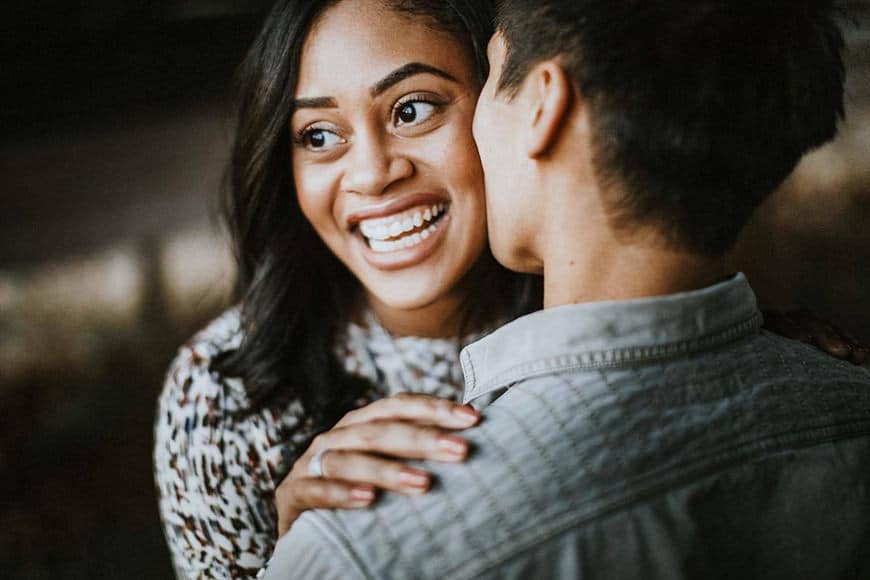
Taken with the 5D Mark IV paired with a 50mm f/1.2 lens | © Jay Cassario
Of course, one of the best things about having a Canon DSLR is the fantastic wide range of lens options available. Arguably one of the best lens makers on the planet, you’ll be able to find just about any kind of lens you want at about any level of affordability.
At just under $2500 the Canon 5D Mark IV is certainly one of the more affordable high-resolution cameras on the market, with just the previous generation Sony a7R III giving it competition there. If you need something a bit less expensive, the Canon EOS Rebel series offers a number of excellent options.
Yes there’s the newer Canon EOS mirrorless cameras including the R5 and R6, but the range of RF lenses is still limited… not to mention very expensive.
Is the Canon 5D Mark IV the best camera for portraits? If you’re a Canon user needing a high-resolution camera, definitely! If you’re looking for something with ultra-high resolution and/or need supremely fast autofocus then no, the other cameras on this list will be better choices.
Best Camera for Portraits | Final Words
Whether you’re a photography enthusiast or a pro, finding the best camera for portraits can be a challenging endeavour. Camera portraiture is highly technical and requires the right tools. Hopefully, this list will give you some keys to finding the best high-resolution portrait camera that will work for you and your workflow.
Just remember that the best camera for portraits is the one that suits your particular style and needs – so perhaps you’re interested in a DSLR with a high ISO range and high-resolution sensor, or perhaps your criteria is based around a mirrorless system with plenty of excellent lens options.
And, of course, it will come down to your budget as well – you can definitely shoot portraits with an entry-level APS-C sensor camera, or even a compact camera with a micro four thirds sensor, but if you’re looking for the top cameras for portraits, you’ll need to invest in full frame or medium format.

Fantastic image quality and performance packed into a durable, ergonomic body. Portrait photographers won't be disappointed.





